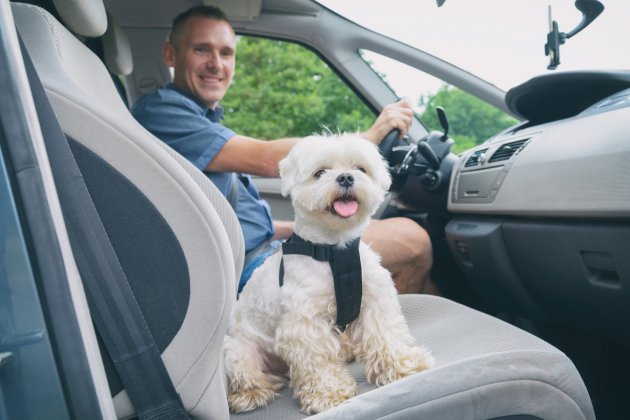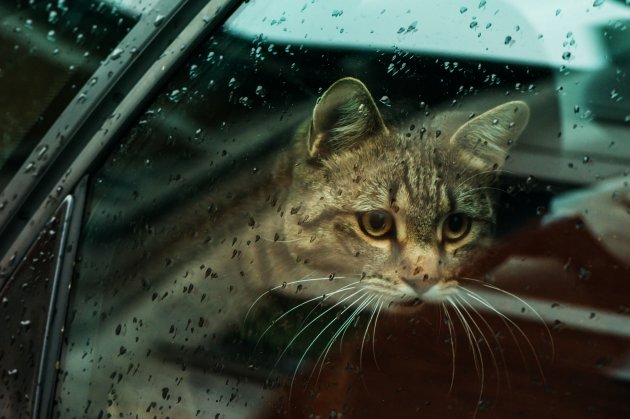Road trips are learning experiences as much as they are adventures. We get in the car, turn up the music, and engage the world in a unique and wonderful way. But for others, a road trip is not complete without their furry family members. However, traveling with a dog or a cat can be nerve-wracking, especially when it is for the first time.
What you need is careful planning and thoughtful preparation to ensure a safe, comfortable, and enjoyable trip for everyone – that includes Doggo, Tomcat, and Ratatouille, too.
Besides munchies and toys, what else should you bring? Here are several recommendations to help you achieve a smooth trip with your pet.
Prepare Your Pet Physically and Mentally
Take your pet on a series of short road trips
Car rides can get anxious pets, particularly first-timers, into a frenzy. The best way to prevent this is to get your furry pal accustomed to shorter road trips. Doing so gives you the opportunity to evaluate your pet’s behavior and assess what else you might need.

Associate quick trips with fun and excitement, so that your pet will learn that getting into the car has its rewards. A quick drive to the 24-hour store, to the park, or to the pet store ensures your four-legged buddy gets used to the car as best as he can.
Ideally, you should spend four to eight weeks doing this repeatedly before you take the long road trip. This will give your furry sidekick enough time to get accustomed to the limited space and mobility of the car.
Complete your pet’s shots
We all want to show off our new fur-baby, but you need to wait until your kitten or puppy has completed his vaccine course. This will usually be by the time they are 14 weeks old. Otherwise, you will be exposing your pet to a multitude of airborne pathogens. Ask your vet when the vaccine protection will become fully protective and from then on, the world is his oyster!
Map out your trip
Make notations for pet-friendly areas where your pet can do potty breaks. Dogs, in particular, need to get out and move once in a while to loosen up cramped muscles.

Pack Up Pet Essentials
Make a “Pet Travel Packing List” and be sure everything is checked before you grab your keys. The following are the things that every pet owner should bring.
Food and water
Bring enough pet food and water to cover the full journey. It is wise to bring some extra food and water in case of traffic or delays. Take note that road trips are not the best time to change your dog’s kibble or have him try your new recipe. Canned moist food is good, but homemade meals should be avoided, as they tend to get stale fast. If you insist, you might get the ugliest ride of your life!
While we are on the subject, make things easier by using collapsible pet bowls. These products are suitable for road trips, as you can stash them in your bag and fill them up during breaks.
Toys and treats
Not all pets are bound to be man’s traveling buddy. Some pets are prone to motion sickness, while others simply do not like being plucked away from the comforts of home. But when the need arises, your furry pal has no choice but to journey the long winding road with you.
If you have an anxious pet, you could pop a blanket or your old T-shirt into his crate and let him snuggle into it. Bringing something familiar to your dog can help create a secure homey environment for him even when you are far away from home.
Additionally, bring nutritional chews or your dog’s favorite toys to help him tolerate the long trip better. Don’t forget to reward your pet with yummy treats for behaving well.
Identification
Bring along your pet’s vaccination record, especially when you plan on traveling across state lines. Some states require this proof at certain interstate crossings. Make sure your cat or dog wears a collar with a tag imprinted with your details including your home address, mobile number, and other relevant information.
You may also want to consider having your pet implanted with microchip identification. Heaven forbid but if you ever lose your pet during a road trip, these will be your best chance of having your furry pal returned to you.
First aid kit
Be prepared for anything to happen and bring along a first aid kit anytime you travel with your pet. These include:
- Bandages and a roll of gauze
- Vet-approved pain relievers
- Hydrogen peroxide for irrigation
- Antibiotic ointment
- Cleaning wipes and paper towels
Ensure Your Pet’s Safety
Confine your pet
Vehicular accidents are one of the most common causes of injuries in pets. Not everyone is a safe driver and you do not want your pet to be thrown from the rear seat to the front.

For puppies, cats, kittens, and pocket pets
We recommend you put your furry pal inside a travel crate or pet carrier throughout the trip. Cats, in particular, have a tendency to move about aimlessly in the car, crawl under the feet, and play footsie. Another advantage of crates is that it reduces motion sickness in puppies and kittens.
Whichever you choose, make sure it is spacious enough for your pet to turn around, lie down, stand, and sit. It is wise to get your pet accustomed to its crate or carrier in the comfort of your home.
For large to giant canine breeds
A pet carrier is only suitable for small dogs and a travel crate is not an option if your vehicle compartment is not spacious enough for a large canine.
Large dogs are better off in the rear seat with a car seat cover for pets. Technically, these products are designed to protect your hard-earned investment from pet hair and scratches. But the best car seat cover for pets are also designed to provide protection against deadly falls caused by sudden stops. Likewise, it gives your dog mobility and comfort without allowing him to interrupt you while driving.
Avoid heatstroke
It can really get hot and stuffy inside the car unless your vehicle is air-conditioned. Bear in mind that a pet confined inside a crate gets hot fast and are at a greater risk for heatstroke.
When traveling in warm weather, a cooling mat can give your pet a helping hand to stay cool. When it starts to lose its cooling effects, you just leave it exposed to air for a few minutes to have it cool right down again.
If you suspect your pet has heatstroke, wet your pet down and rush him to the nearest vet. Signs of heatstroke include breathing difficulties, excessive panting, foamy drool, collapse, and seizures.
Stop from Time to Time
Have frequent toilet breaks along the way. A good rule of thumb is to stop every two hours just in case your dog needs to go potty. For cat owners, consider bringing a travel litter box.
Likewise, roam a little and enjoy the scenery. Let your dog sniff a battery of smells and let your cat excite over wonderful sights. Having your pet do so stimulates his mind - making the rest of the trip a lot more pleasurable for you and your pet.
Just be sure to put your dog on a harness. If for puppies and toy dogs, a dog carrier sling would prove helpful. For cat owners, you may want to tuck your whiskered friend in a kitty backpack or risk Tomcat wandering away.
What Not to Do During a Road Trip with Your Pet
Do not stuff your pet
Do not overfeed your pet prior to traveling. Otherwise, expect a high percentage chance of puking and poop scooping. According to PetMD, a light meal three to four hours before departure is enough. Adult dogs and cats may only require another serving of food if the traveling lasts longer than 12 hours. Puppies and kittens, on the other hand, will require more frequent feeding.
Lap dogs should stay out of the front seat
You should never bring your pet in the front seat whether yours is a gentle lapdog or just a fat sleepy cat. In other words, you should not hold your pet while you drive or have him sit next to you on the passenger side seat. Even if you are not the one driving, you should not allow your pet to laze on your lap. The airbag or seat belt won’t protect your pet since these are only designed for an adult human. Hence, the smallest accident can be fatal to animals.
No tongue lolling and head poking for Doggo
What you see in the movies is not always applicable to dogs. While your canine buddy may lounge comfortably on the rear seat, do not allow your dog to stick his tongue out or poke his head outside the window. Flying objects could injure him.
Never leave your pet inside the vehicle
On a hot day, a parked vehicle can easily turn into a furnace and cause your pet to develop heatstroke. If you see someone else’s dog left alone in a car on a hot summer day, read this guide and learn what you should do.
Conclusion
Putting a lot of effort into meticulous planning and preparation ensures a smooth trip with your furry sidekick.
Although food, water, identification, and a first aid kit are the most important things your pet needs, know that there are also other items that could also help you along the way. The more equipped you are, the better.
It is a good idea to prepare ahead of time and practice on your pet with a few short trips before you decide on an extended road trip.